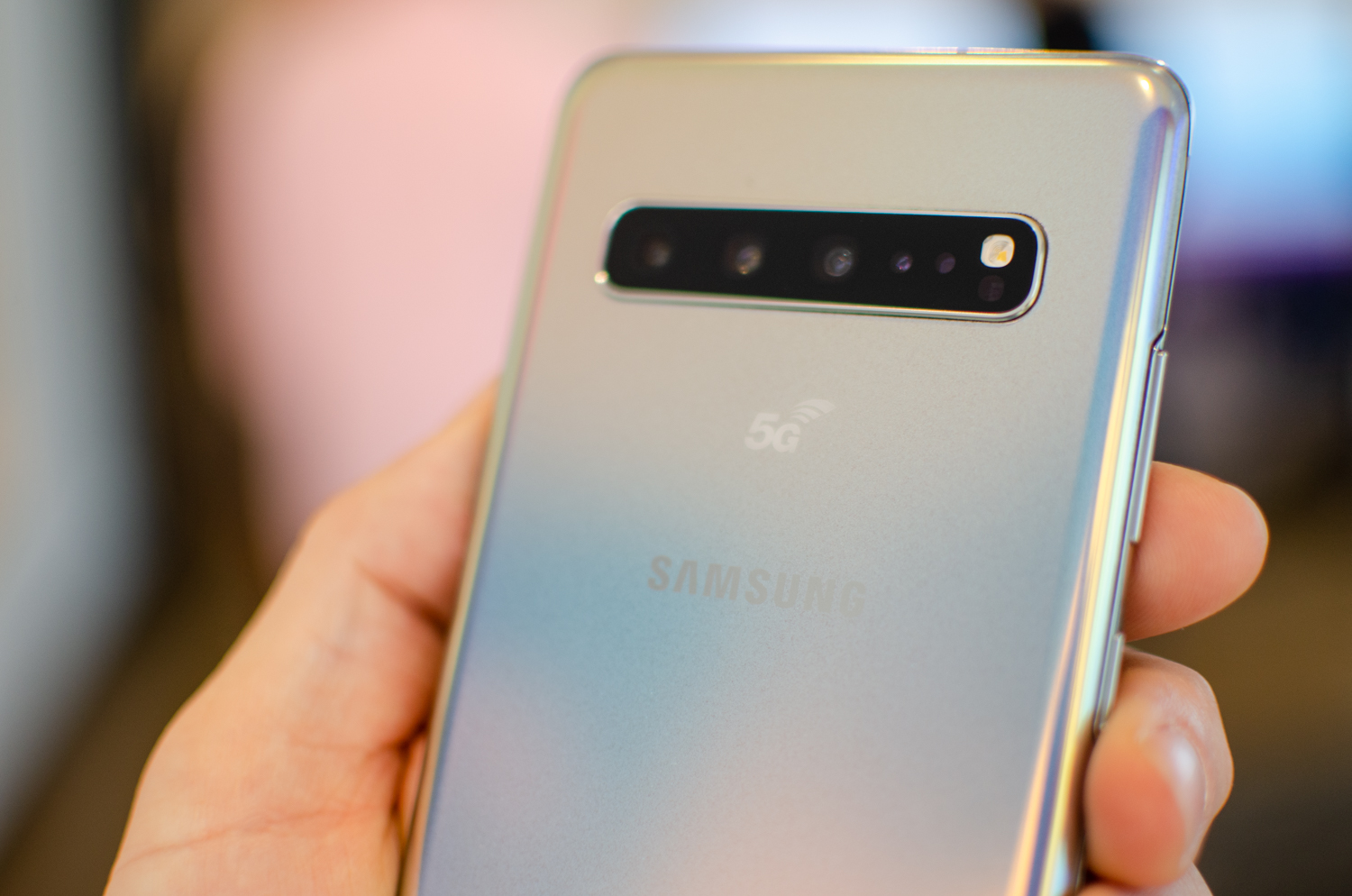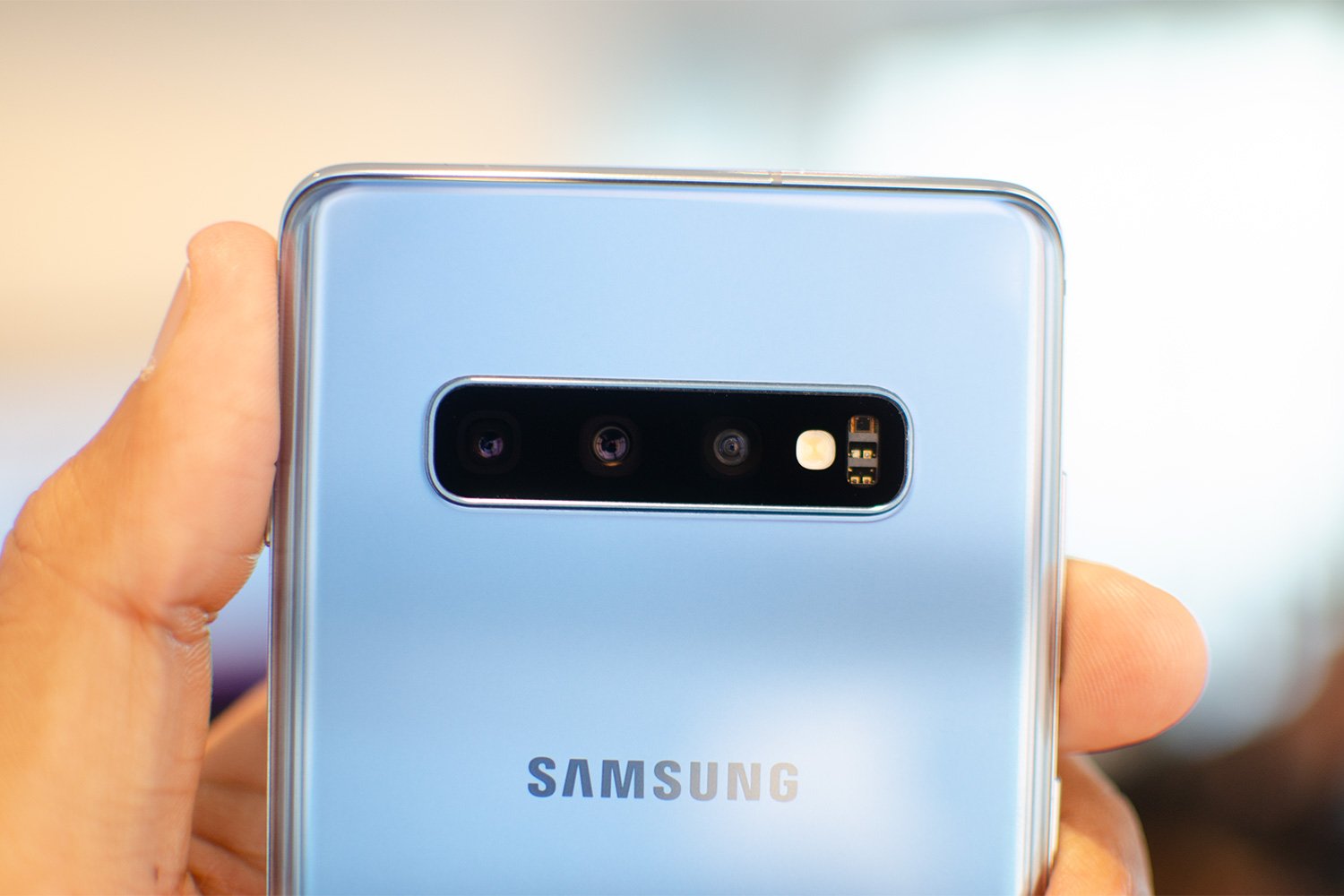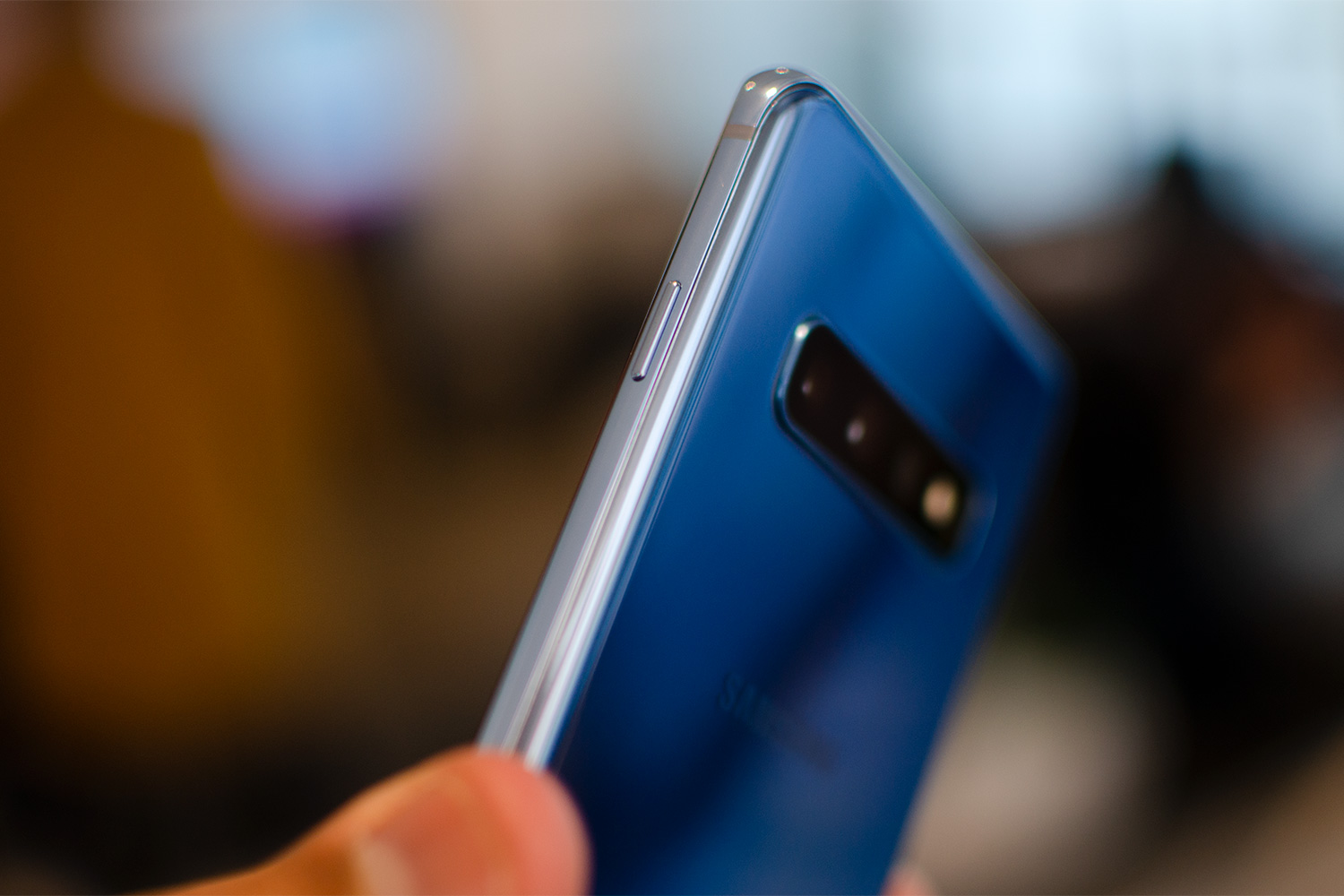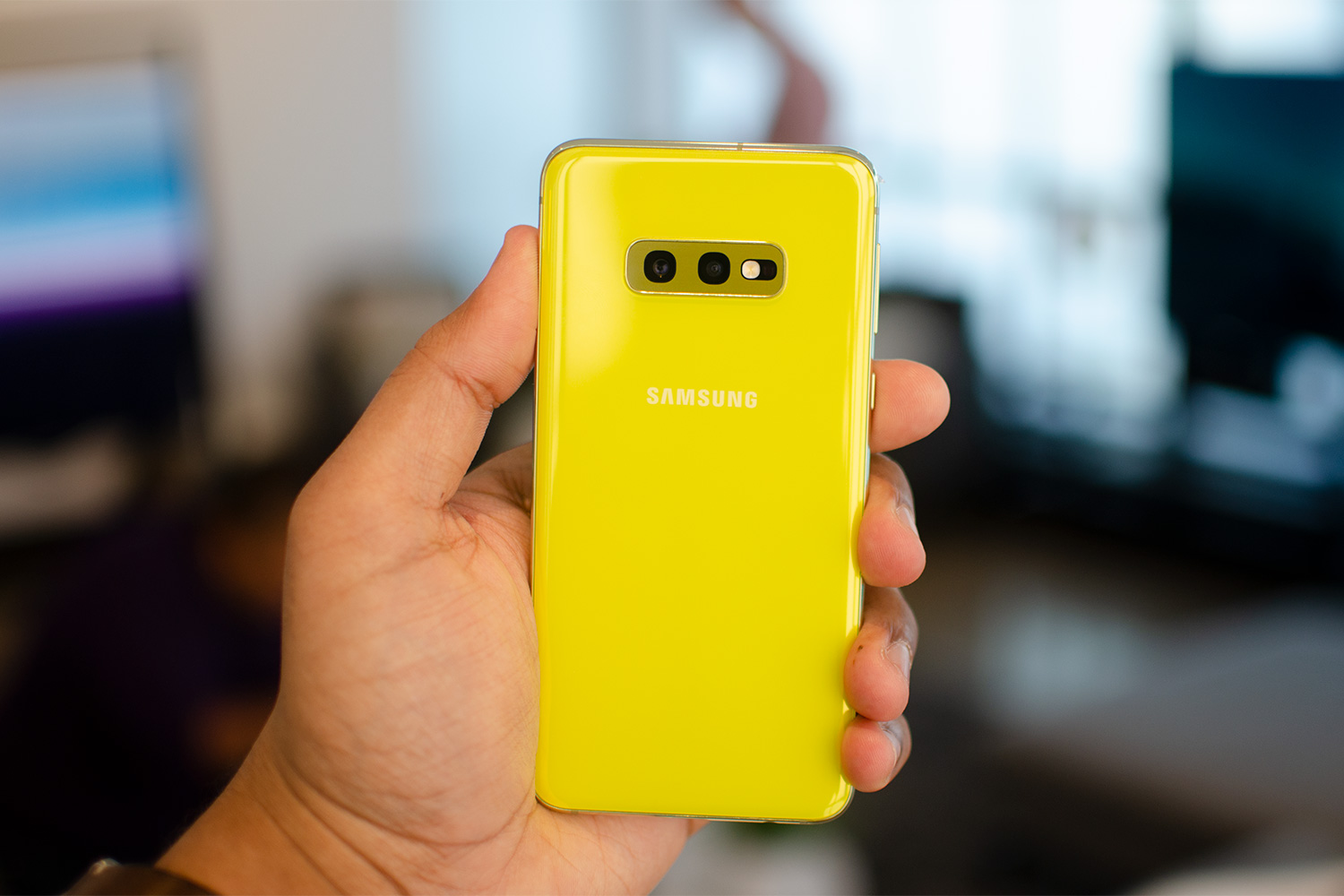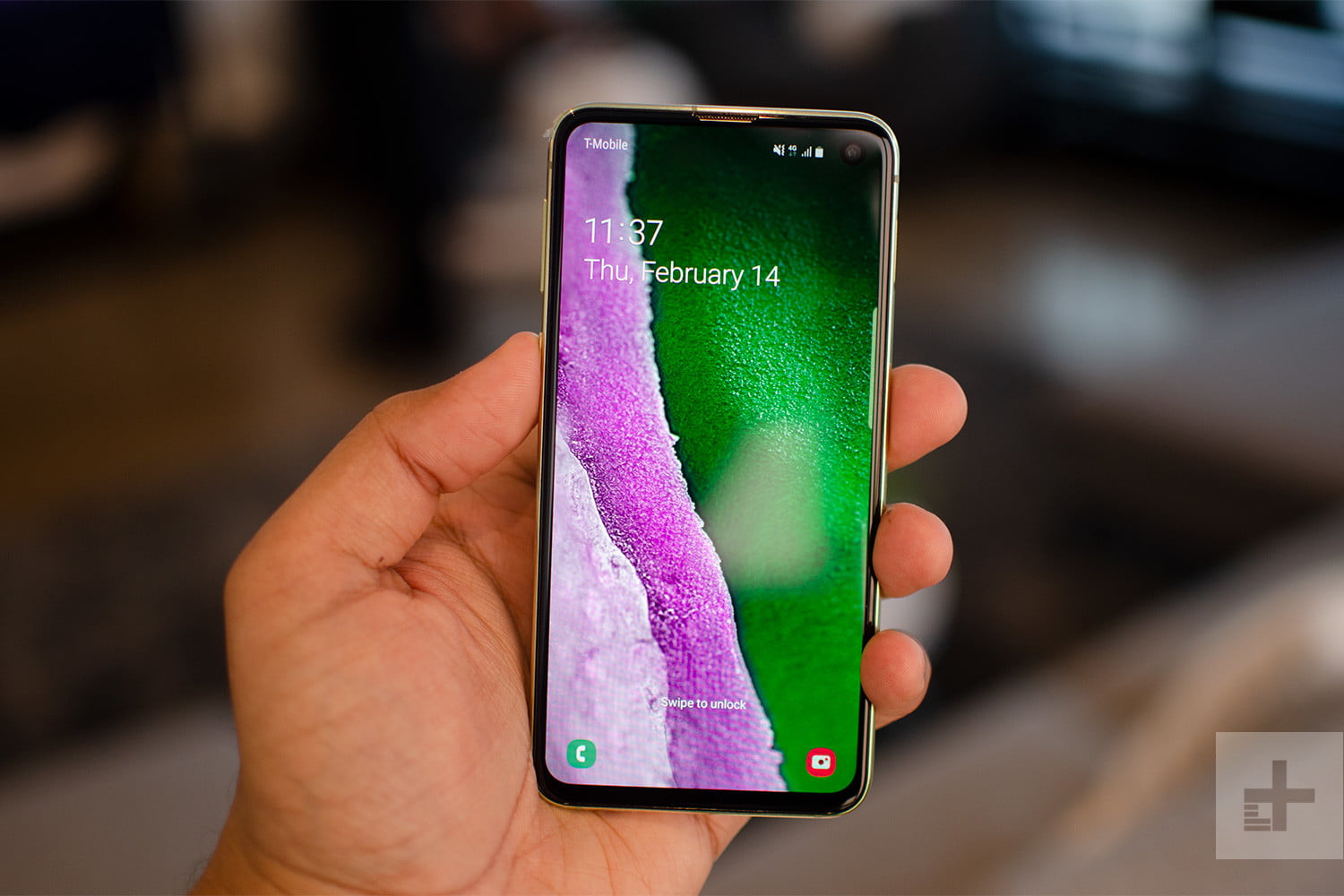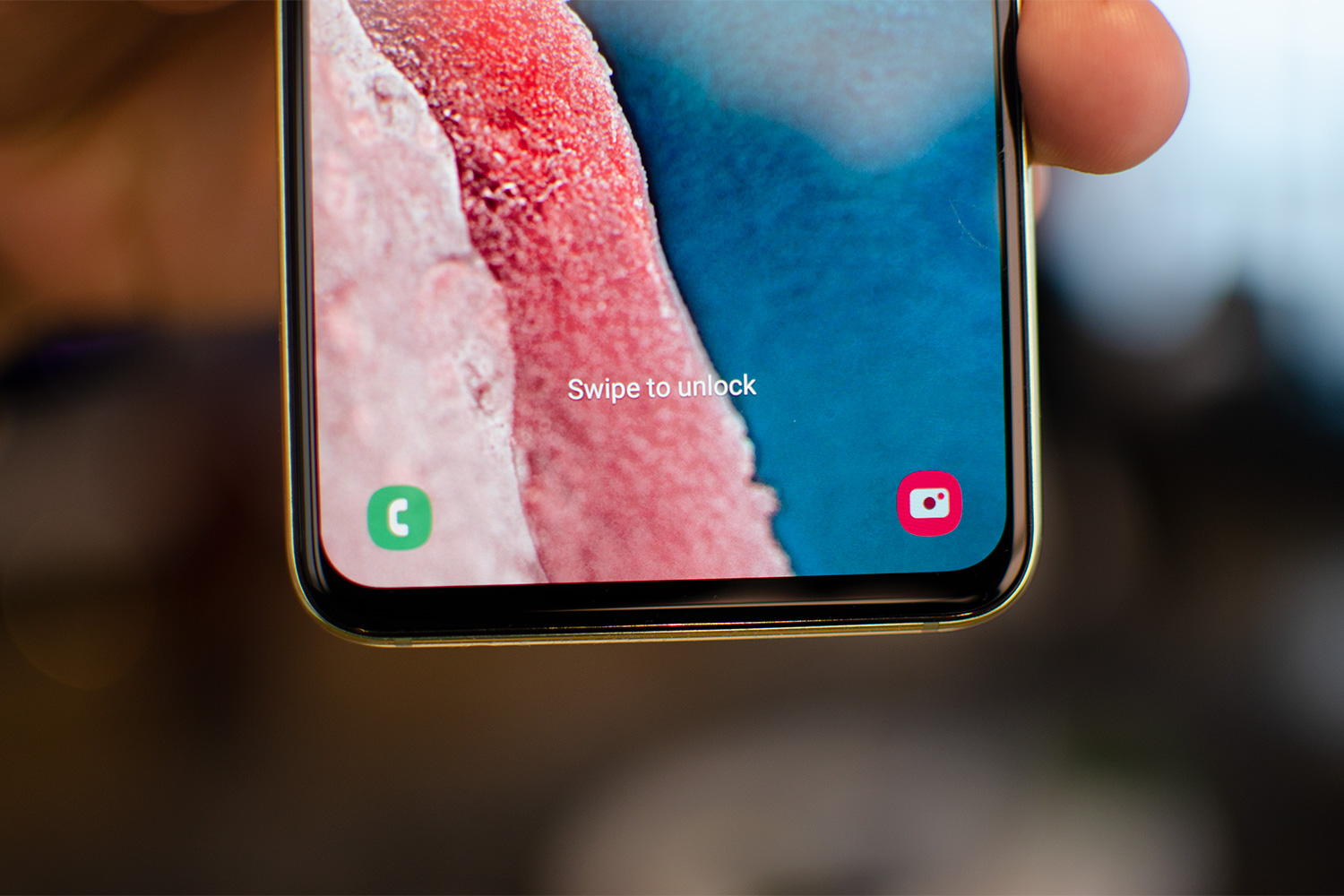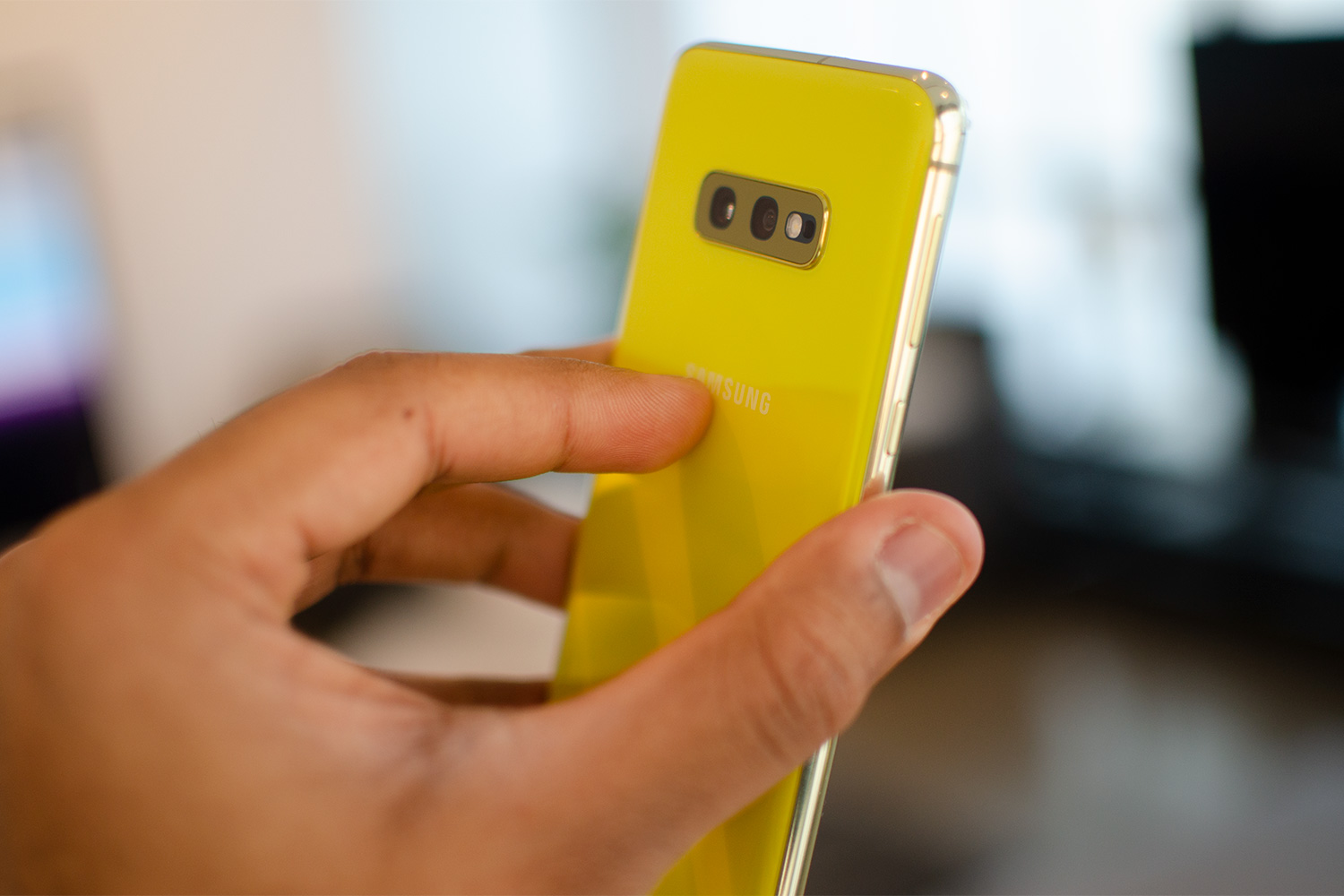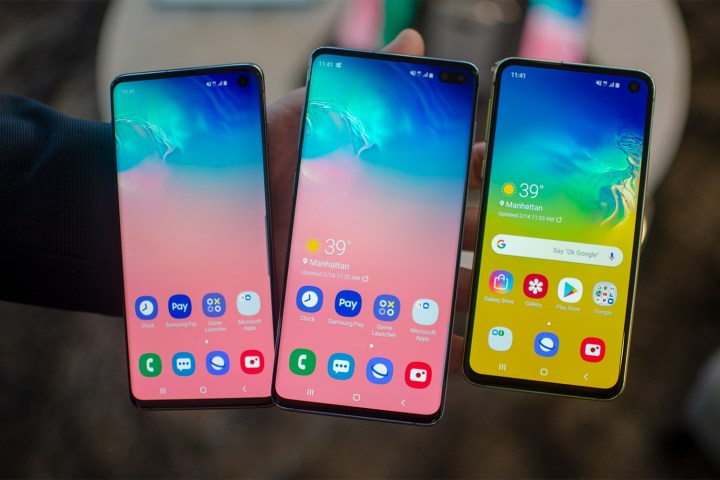
There is a Samsung Galaxy S10 phone for everyone in the company’s extensive 2019 line-up. The Galaxy S10 and Galaxy S10 Plus bring plenty of improvements over last year’s Galaxy S9 and S9 Plus, plus there is the more affordable Galaxy S10e, and the massive Galaxy S10 5G, for those who really want to be on the cutting-edge of new tech.
After you have read our reviews, we’ve got all the latest news and complete overview of Samsung’s Galaxy S10 range below.
Updates
The Galaxy S10 range is getting some of the Note 10’s most exciting new features

The new features introduced in the Galaxy Note 10 range may have made the S10 range feel a little outdated, but that’s not going to be the case for much longer. On September 23, Samsung is going to be porting a number of the Note 10’s best new features to the Galaxy S10 range, including AR Doodle, Live Focus Video, the updated Samsung Dex desktop mode, and more.
The S10 range’s already capable camera is definitely getting the biggest boost, with added features from the Note 10 including the Live Focus Video that blurs backgrounds around a subject, and the mischievous AR Doodle that lets you draw on faces in augmented reality — but it’s also getting a Night Mode for the front-facing camera, enhanced video stabilization, and the Note 10’s video editor.
But that’s not all. The Note 10’s excellent new Samsung Dex desktop mode will also be coming to the S10 range, and includes all of Samsung’s Link to Windows features, so you’ll be able to check and reply to messages on your PC, and attach your phone to your computer and use it in its own virtual box on your Mac or PC.
All of these features will be coming to the Galaxy S10, S10 Plus, S10e, and S10 5G on September 23, except for the new Dex mode, which will also require an app downloaded from Samsung’s Dex website on your computer.
Night mode comes to AT&T Galaxy S10 Plus phones
Samsung is reportedly sending out a crucial update to its Galaxy S10 Plus phones in the U.S. via the AT&T network. The new software contains the updated, dedicated Night mode for the camera, which lets you take brighter, better quality shots in low light. The update also includes a QR code scanner, and the latest Android security patch too.
The update is only coming to AT&T phones at the moment, according to XDA Developers; but it’s likely other carriers will also have the update ready for a future launch.
Cardinal red Galaxy S10 and S10 Plus exclusive to EE in the U.K.

Much like the Galaxy S9 before it, the S10 has at least one special edition color added to the line-up. A beautiful cardinal red Galaxy S10 and Galaxy S10 Plus has been announced by the EE network in the U.K., where it will be exclusively available for an unknown period of time. The price is the same as the existing models. Currently, there is no indication the red Galaxy S10 will make it to the U.S.; but we may yet see an alternative do so, much as the sunrise gold Galaxy S9 did.
Samsung Galaxy S10 and S10 Plus
New fingerprint sensor, Infinity-O display
There are quite a few visible differences between last year’s Galaxy S9 series and the Galaxy S10 series, notably on the back as the phones mimic the horizontal camera setup that’s present on the Galaxy Note 9. The back design is cleaner than usual because there’s no fingerprint sensor. Instead the S10 and S10 Plus have an ultrasonic fingerprint scanner on the front under the display like the OnePlus 6T, but the technology is different.
- 1. Samsung Galaxy S10
- 2. Samsung Galaxy S10
- 3. Samsung Galaxy S10 Plus
- 4. Samsung Galaxy S10
Samsung said the in-display fingerprint has better anti-spoofing measures as it scans the 3D contours of thumbs and fingerprints instead of just capturing an image; machine learning algorithms are applied to keep it secure. The fingerprint data is stored in the phone’s Knox TrustZone, so it’s never uploaded to the cloud. What’s neat is the in-display fingerprint sensor is secure enough to be used to unlock sensitive apps like the one from your bank, and can even be used to authenticate payments via Samsung Pay. It also has a FIDO (Fast Identity Online) Alliance Biometric Component certification, which is a relatively new standard that ensures biometric tools pass certain tests and are indeed secure.
Key Specs
- CPU: Qualcomm Snapdragon 855
- Memory: 6GB base for S10e, 8GB base for S10 and Plus
- Storage: 128GB+
- MicroSD storage: Up to 512GB
- Screen size: 5.8 inches for S10e, 6.1 inches for S10, 6.4 inches for S10 Plus
- Battery: 3,100mAh for S10e, 3,400mAh for S10, 4,100mAh for S10 Plus
- Headphone jack: Yes
- Operating system: Android 9 Pie
The fingerprint sensor under the glass is new, and so is the screen technology, which Samsung calls the Dynamic AMOLED display. Not only is it the first HDR10+-certified screen, which means it offers crisper details and more accurate colors, but it also reduces blue light exposure by 42%. Blue light at night can disrupt sleep, which in turn can affect your health, and Samsung’s new screens are TÜV Rheinland-certified to reduce exposure.
The screens are Samsung’s Infinity-O display type, which means there’s a hole-punch camera at the top where the selfie camera sits. A laser-cutting process cuts out a small hole from the screen without damaging pixels, which allows the phone to have skimpier bezels around. The end result is an impressive screen-to-body ratio of 93.1%, giving you more screen real estate than ever before. The Galaxy S10 has a 6.1-inch screen whereas the S10 Plus opts for a 6.4-inch one. Both have a 19:9 aspect ratio, with a Wide Quad HD+ resolution.
More cameras
The hole-punch camera — which we first saw on the Honor View 20 — fits just one camera on the S10 but two on the S10 Plus. The main lens is a 10-megapixel camera with an f/1.9 aperture, with the capability to shoot 4K UHD video. The S10 Plus’ second lens packs 8-megapixels with an f/2.2 aperture, but it’s used only to capture additional depth data for better blur or bokeh effects with selfies.
While the selfie cameras have been upgraded, don’t expect the phones to support Iris Scanning anymore as a way to unlock the phone. As there’s now a secure in-display fingerprint sensor, Samsung has removed the iris as an optional way to unlock the phone. A face unlock feature is still available but it’s not as secure, so it can’t be used with Samsung Pay.
It’s the rear camera setup that’s a little more interesting. There’s now a third camera joining the party, and it’s an ultra wide-angle, 16-megapixel lens with an f/2.2 aperture. It’s joined by the standard 12-megapixel lens with an f/1.5 to f/2.4 variable aperture (which we first saw on last year’s Galaxy S9), as well as a 12-megapixel telephoto lens with an f/2.4 aperture. The latter two lens feature optical image stabilization. Both the S10 and S10 Plus have the same rear camera setup, which is a stark difference from previous offerings as Samsung’s Plus-sized phones always had the extra camera as an additional purchase incentive.
The third camera offers a 123-degree field of view, and it makes the Galaxy S10 and S10 Plus more versatile cameras. We’ve seen these three types of camera lenses on phones before already though, as Huawei has done it on the Mate 20 Pro, and LG did the same on the V40 ThinQ. This ultra-wide sensor can be used for features like the new Ultra-Wide Panorama feature, and those panoramas can be taken both horizontally and vertically.
Scene Optimizer is back — it uses artificial intelligence to enhance photos based on what an algorithm thinks is correct, and now Samsung has added support for 10 more scenes including babies, dogs, cats, shoes, and more, bringing the total to 30 supported scenes. One new camera feature is called Shot Suggestions, which is when the camera app offers suggestions such as straightening the camera so the photograph isn’t tilted.
If you’re an Instagram user, the Galaxy S10 might be for you too — the device will come with an Instagram mode built right into it, essentially meaning you can shoot photos and upload them directly to your Instagram stories. You’ll get access to stickers, editing tools from Instagram, text, hashtags, and so on.
As for video capture, Samsung said the new S10 range supports super-steady video capture, and they can film in HDR10+ at 4K as well.
Specs
The Galaxy S10 and S10 Plus are powered by Qualcomm’s Snapdragon 855 processor in the U.S., with 8GB of RAM and 128GB of storage for the base models. The S10 only offers 8GB of RAM for the 512GB variant, but the S10 Plus has a 12GB RAM option for the 1TB storage option. There are MicroSD card slots in case you need more space, and you still won’t need to get rid of your 3.5mm earbuds because the phones still have headphone jacks.
The S10 has a 3,400mAh battery, but the S10 Plus ratchets it up to a large 4,100mAh capacity, which beats out the battery on the Galaxy Note 9. A USB-C port charges it back up, but Samsung strangely still only supports Qualcomm’s Quick Charge 2.0 technology, so your phone won’t charge as fast as many other Android phones today. There’s Fast Wireless Charging 2.0 support, so wireless charging should be the same speed as wired, which again is a little behind the times.
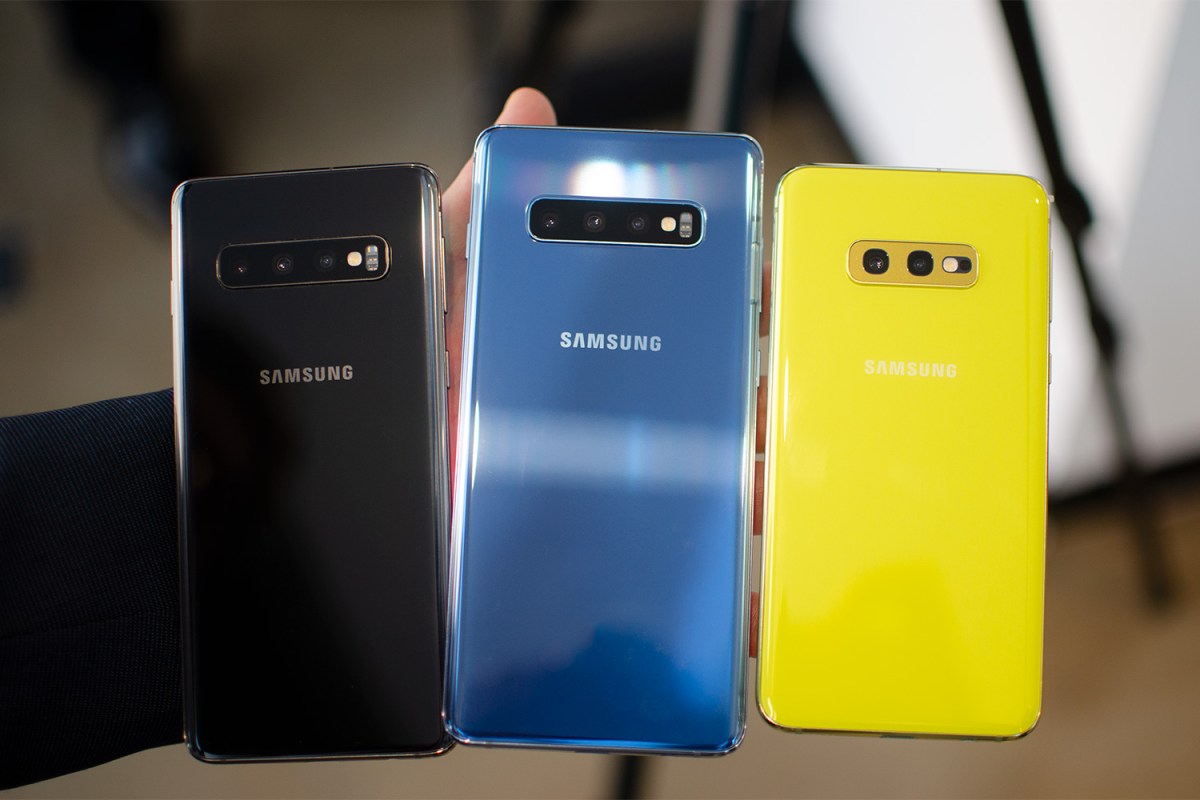
Speaking of the battery, Samsung is taking out a page from Huawei’s book with a new feature called Wireless PowerShare. It lets you juice up any Qi-enabled product by simply placing it on top of the back of the phone. So you can charge an iPhone XS back up with the S10 series, or even Samsung’s new Galaxy Buds, which come with a case that supports wireless charging.
The Galaxy S10 Plus does differ from the rest of the range because it has a vapor chamber cooling system designed to keep the phone cool for a longer period of time as you perform graphics-intensive tasks, like playing Fortnite. It should mean the phone offers slightly better performance. All the phones are also optimized for the Unity engine, which many games are built on, and Samsung said that should improve frame rates and latency — games should run better, in layman’s terms.
There are stereo speakers and they’re tuned by AKG with support for Dolby Atmos. As usual, the devices are also IP68 rated for water resistance, so you can take them underwater for 30 minutes up to 1.5 meters.
Finally, the Galaxy S10 range are among the first phones to support the new Wi-Fi 6 standard. It delivers a better transition from LTE to Wi-Fi, a more secure connection, 4 times faster access, and it’s just 20% faster than the previous Wi-Fi generation. There aren’t a lot of routers that support the new standard just yet, but it further future-proofs the phone.
Software
The phones run Android 9 Pie, the latest version of Android, with Samsung’s One UI interface layered on top. There aren’t a ton of new software features, but Samsung said the phones offer faster app launch times as it learns your habits and preloads apps when it expects you’re about to use them. So if you regularly open Flipboard in the morning, it will prepare the app ahead of time so it launches quicker.
Bixby — yes, the virtual assistant still exists (with its own dedicated hardware button) — now has a new feature called Bixby Routines. There are three modes in Routines: Driving Mode, Work Mode, and Night mode; set up the apps you want to use in these modes and Bixby will ensure they are easily accessible and ready to go when these modes are triggered.
Samsung Galaxy S10e
The Galaxy S10e looks more distinct due to only having two cameras on the back, and for forgoing the iconic “Edge” display on the front. It’s a flat display instead, meaning the screen’s edges don’t curve, which Samsung hasn’t offered on a flagship since the Galaxy S7. It’s smaller, with just a 5.8-inch Dynamic AMOLED screen and a Full HD+ resolution. It has a 91.6% screen-to-body ratio.
The base model starts with 6GB RAM and 128GB of storage, but an 8GB and 256GB option is also available. Many of the other specifications are the same, including the Snapdragon 855 processor, though the battery size is smaller at 3,100mAh. There’s also no in-display fingerprint sensor — instead, it’s a capacitive sensor on the right edge of the phone, which is similar to older Sony Xperia smartphones.
The S10e doesn’t have the telephoto lens you’ll find on the S10 and S10 Plus either. Rather, it keeps the new ultra-wide-angle lens the other two have, pairing it with the same 12-megapixel standard lens.
Durability
Each member of Samsung’s flagship range has been put to the test by SquareTrade, to see how durable each one is.
None of the devices got away damage-free. The S10e came off worst, as the screen not only shattered, but became nonfunctional after a single drop. The back drop saw the camera lenses shatter and the flash stop working too. The S10 Plus fared better, functioning perfectly after both drops. However, both front and back drops caused shatters with dangerously loose glass shards. The standard S10 performed the best, staying fully functional despite similar shattering, but with no dangerous glass shards.
These results put the phones in a similar league to the Galaxy S9 and iPhone XS range, There’s no doubt these valuable phones benefit from protection, and that’s why we’ve put together case round-ups for the Galaxy S10, Galaxy S10 Plus, and the Galaxy S10e.
Price and availability
All three phones come in Prism Black, Prism Blue, Flamingo Pink, Prism White, and Prism Green color options, but only the pink, black, blue, and white options are available in the U.S. The Galaxy S10e is the cheapest, starting at $750 for the base 128GB model. Next is the Galaxy S10, which costs $900 for the same amount of storage; and the price goes up to $1,000 for the Galaxy S10 Plus. Check out our buying guide for more details.
To commemorate the 10-year anniversary, the 512GB and 1TB Galaxy S10 Plus models will come with a ceramic backplate. Ceramic offers better scratch resistance and durability than glass, though Samsung is hardly the first to use the material in a smartphone.
The 5G version of the Galaxy S10 will arrive in the second quarter of the year as an exclusive on Verizon, but will be sold through Sprint, AT&T, and T-Mobile later on in the same time period.
Updated on September 25, 2019: The S10 range is getting a bunch of Note 10 features.
Editors' Recommendations
- Samsung has a new (and cheaper) way to buy the Galaxy S23
- A new version of the Samsung Galaxy S24 could be coming soon
- Have one of these Samsung phones? You’re getting Galaxy AI features next month
- There’s something Samsung didn’t tell you about the Galaxy S24
- These are Samsung’s secret colors for the Galaxy S24




